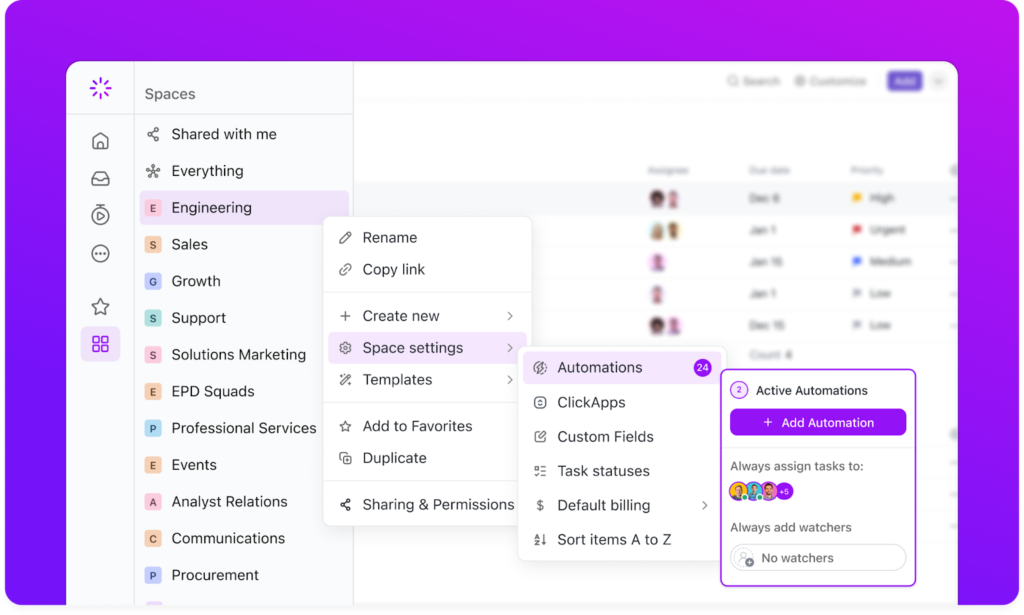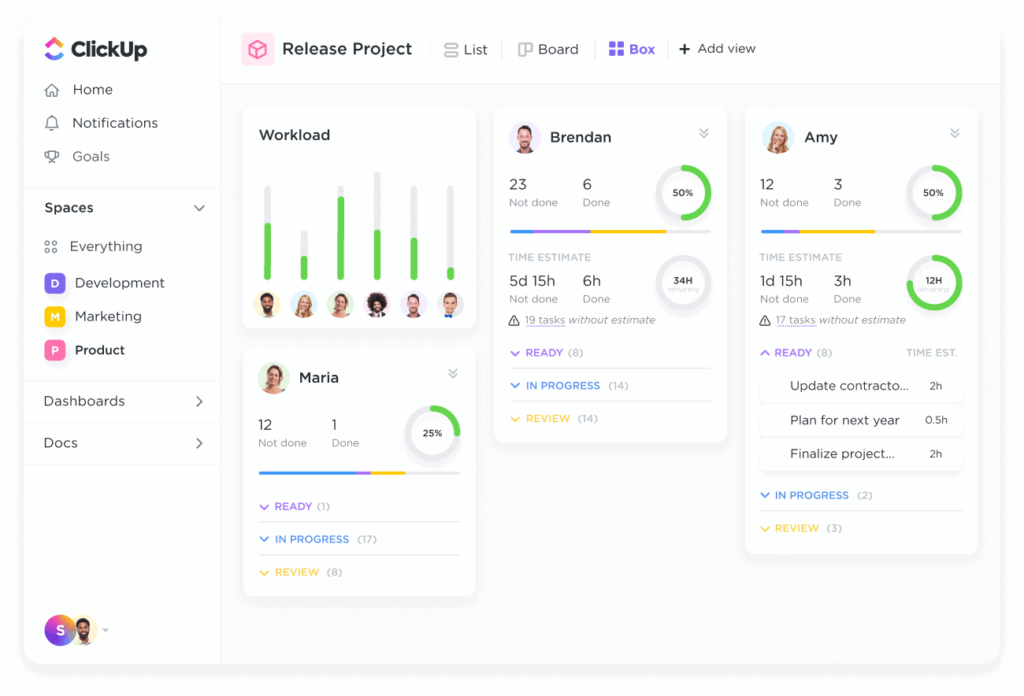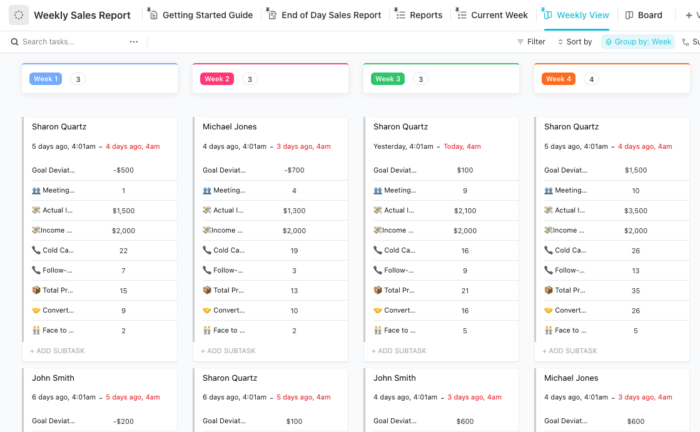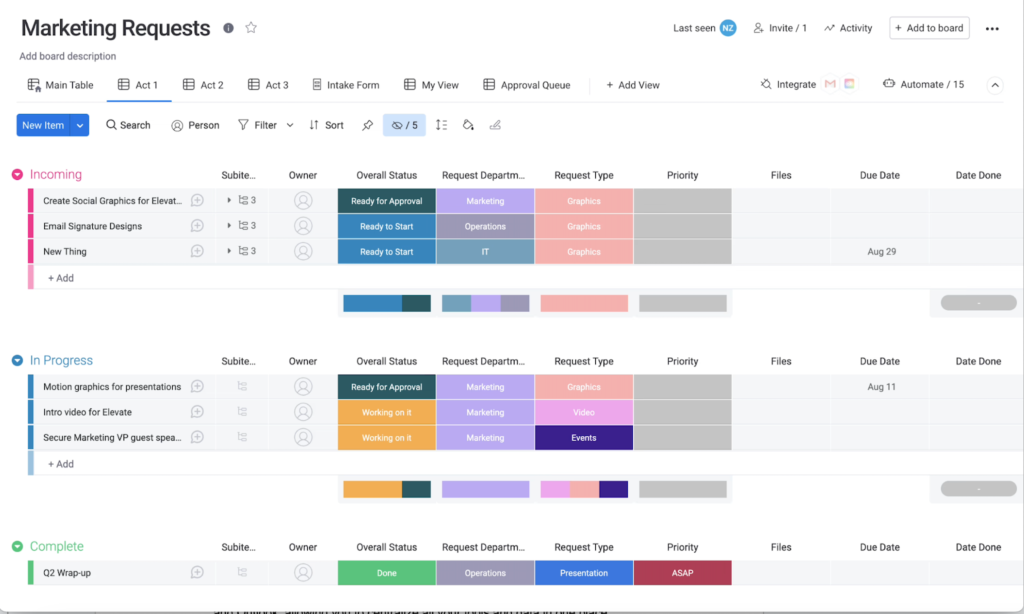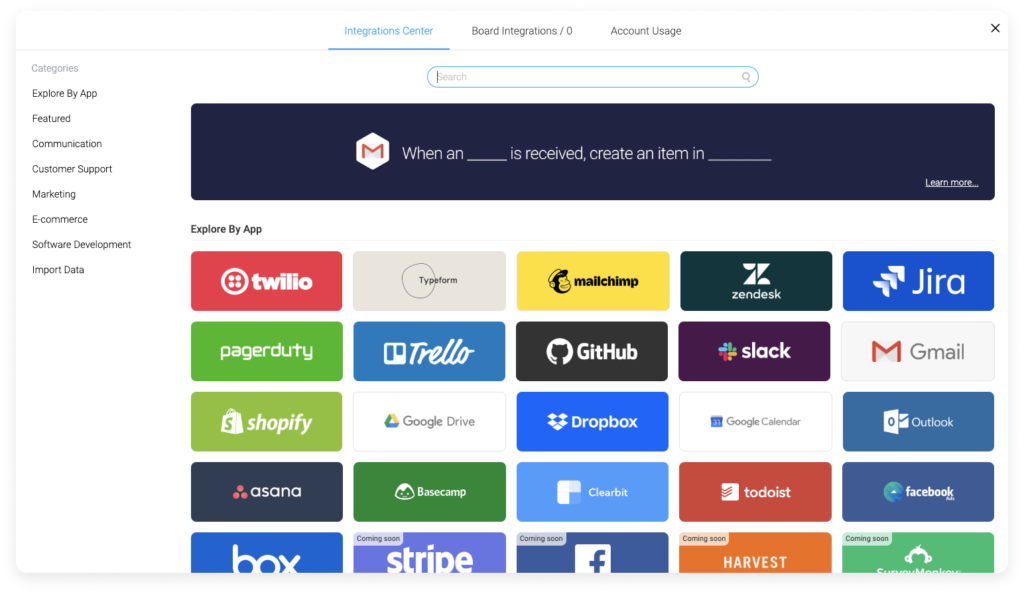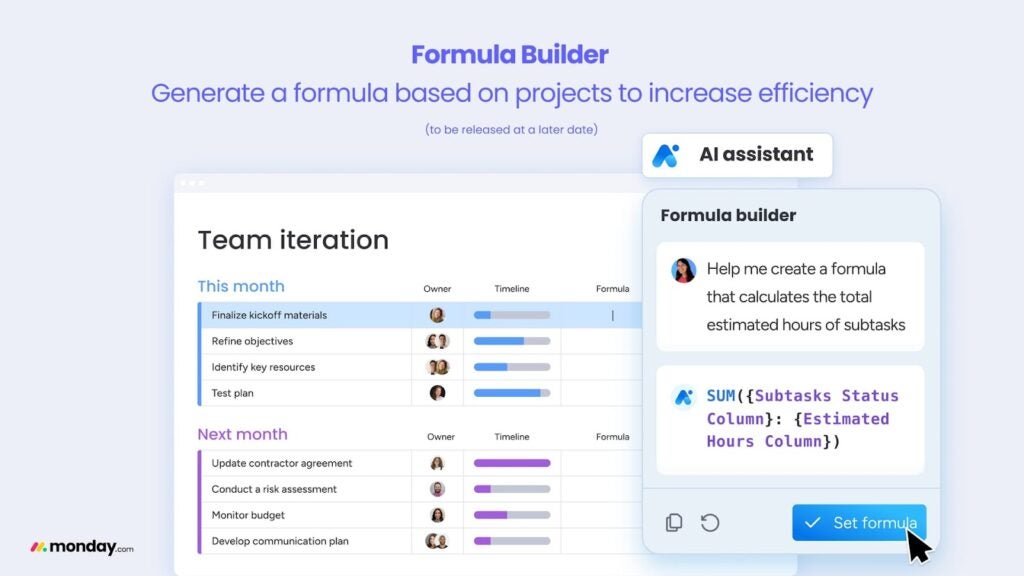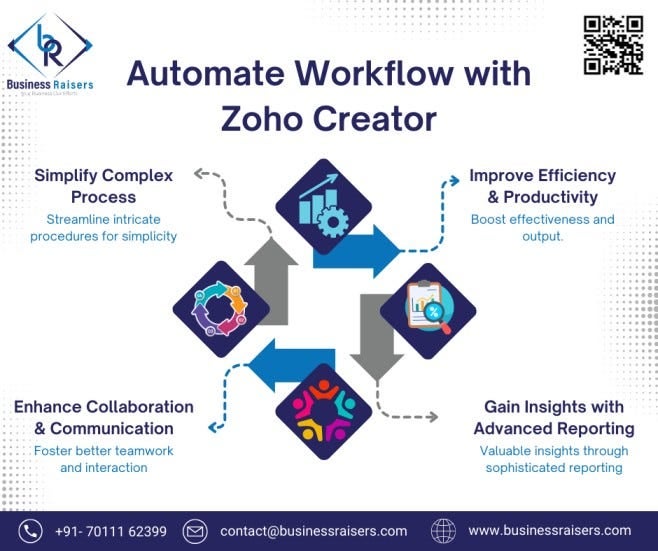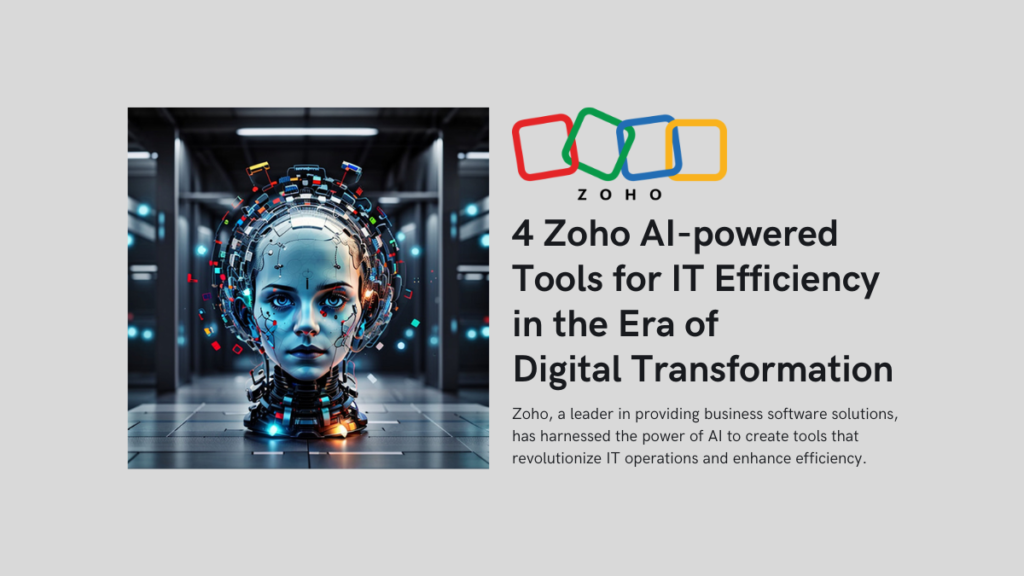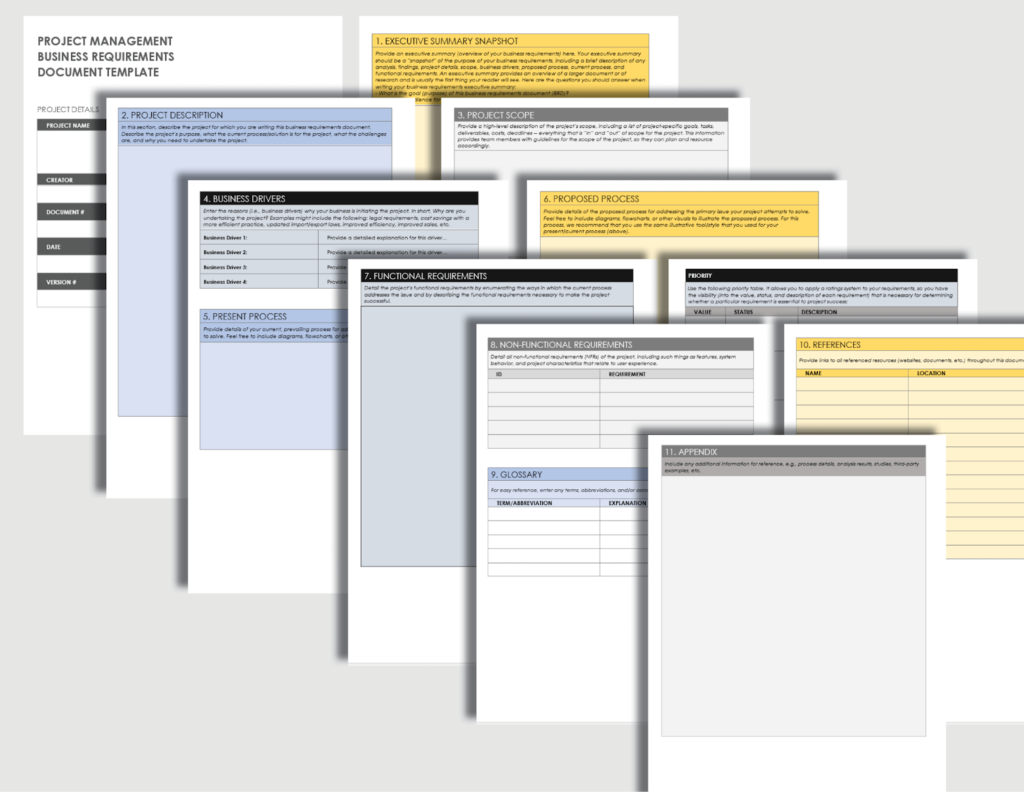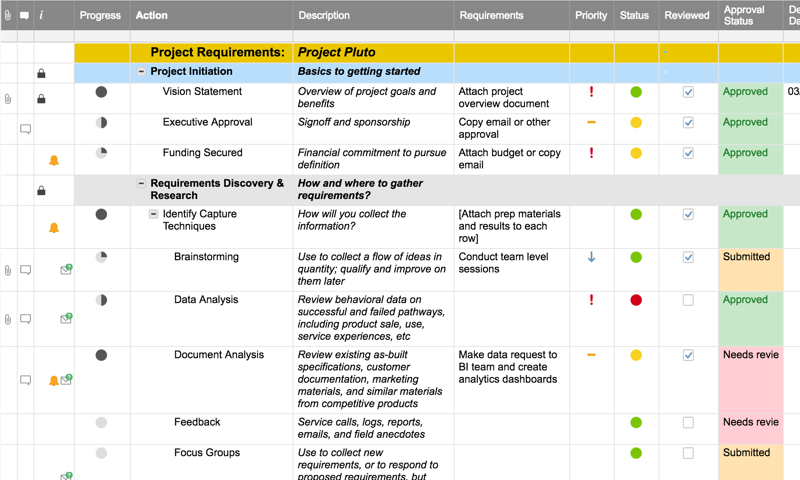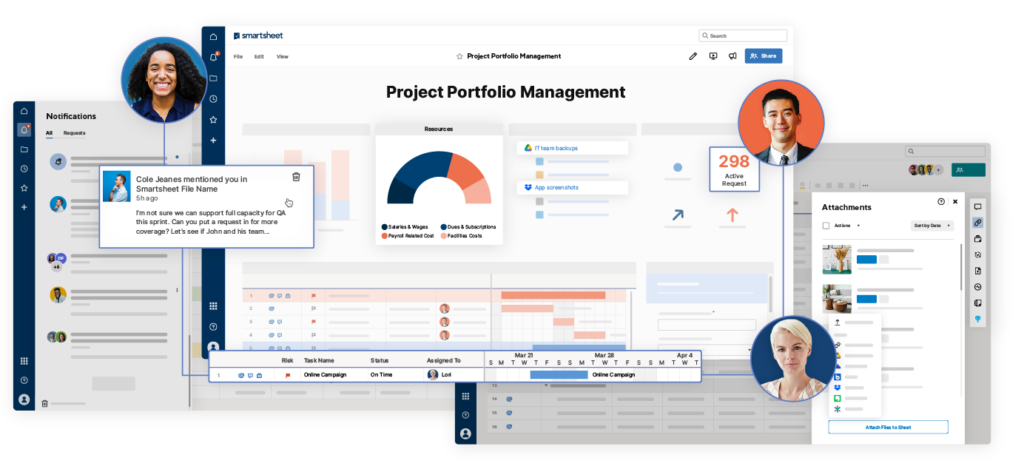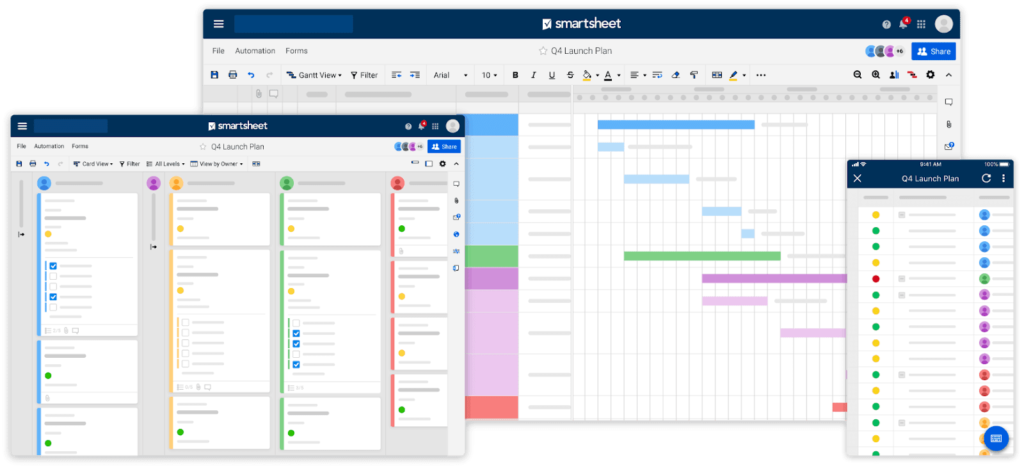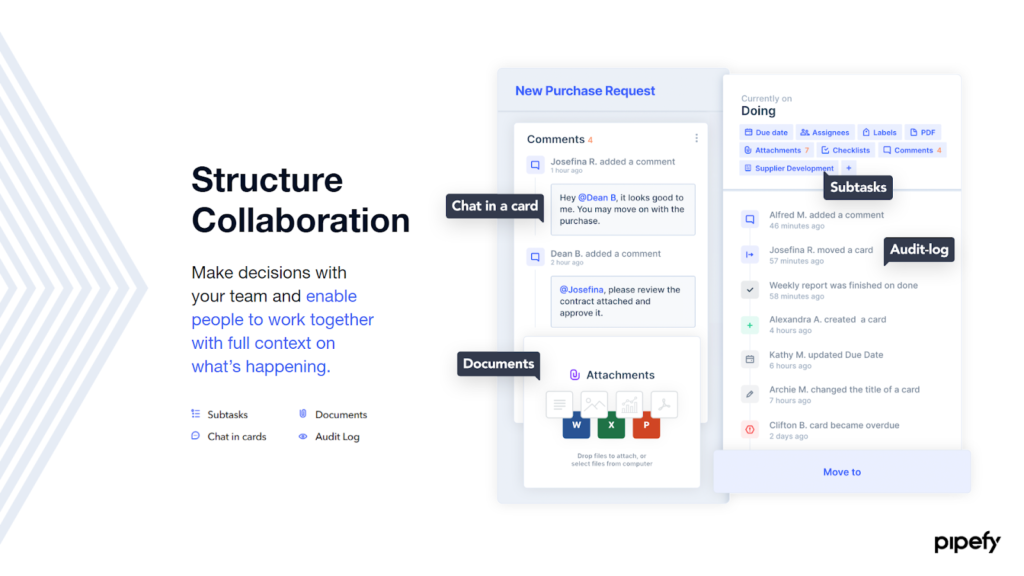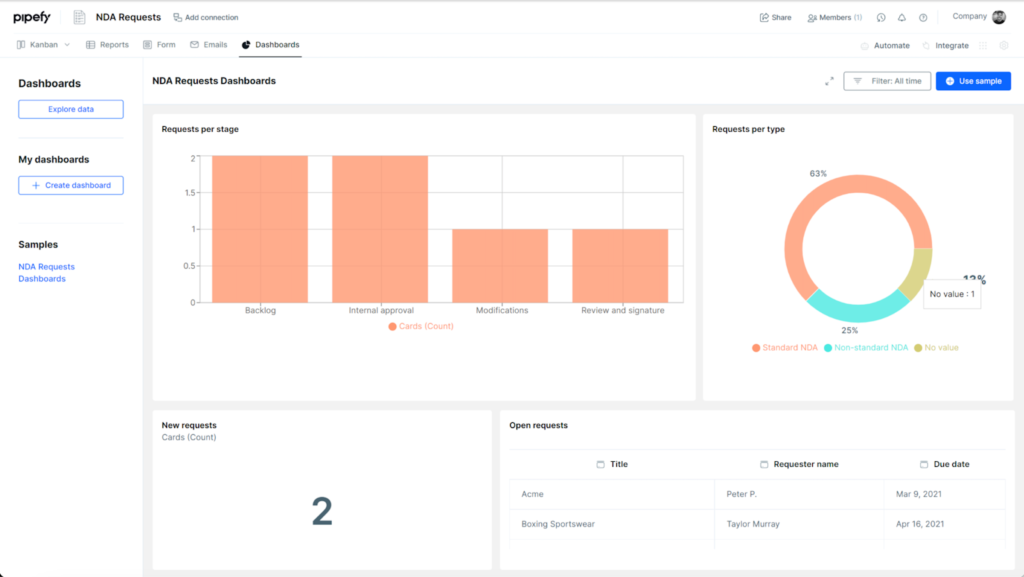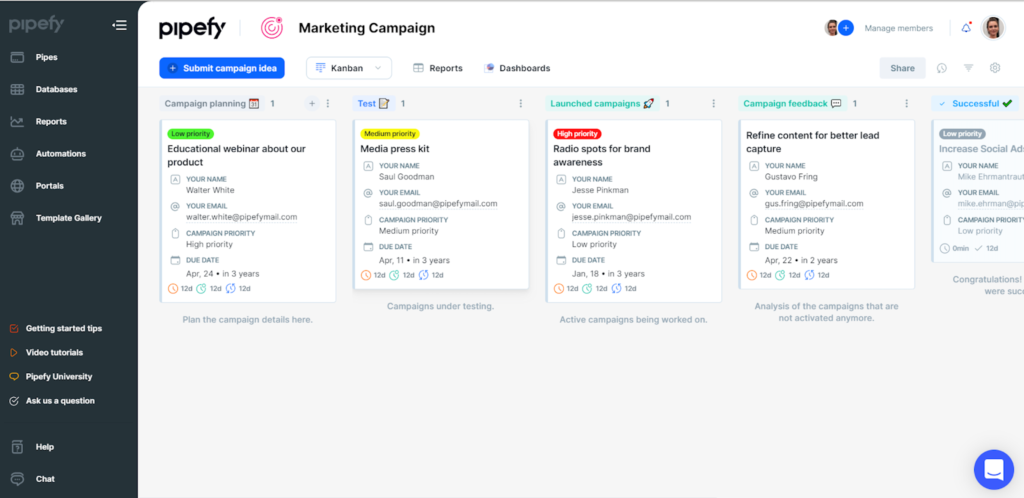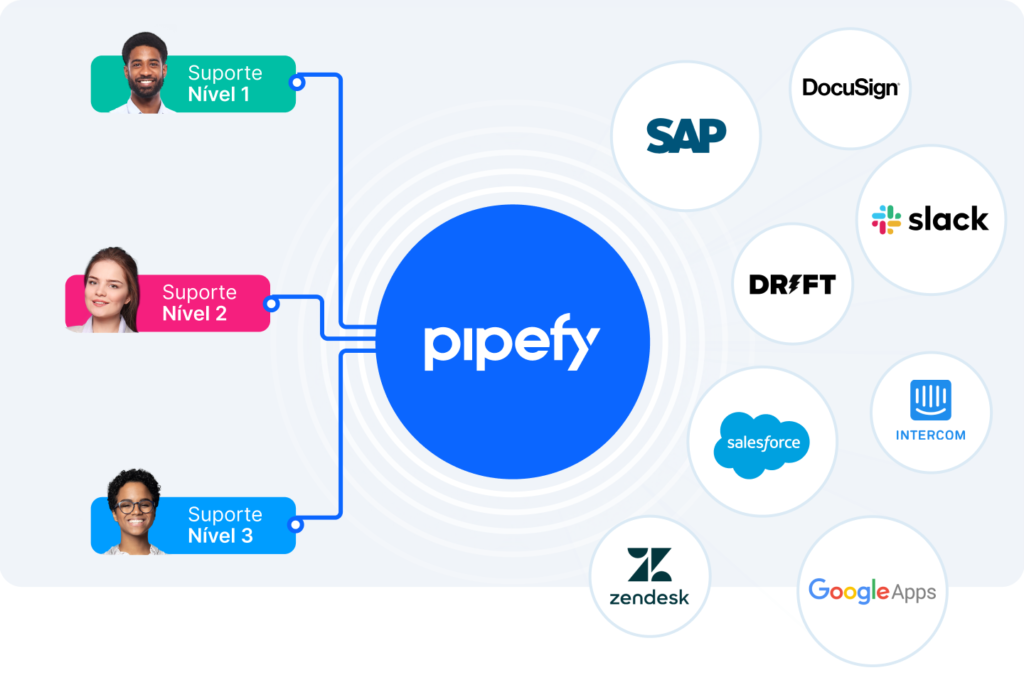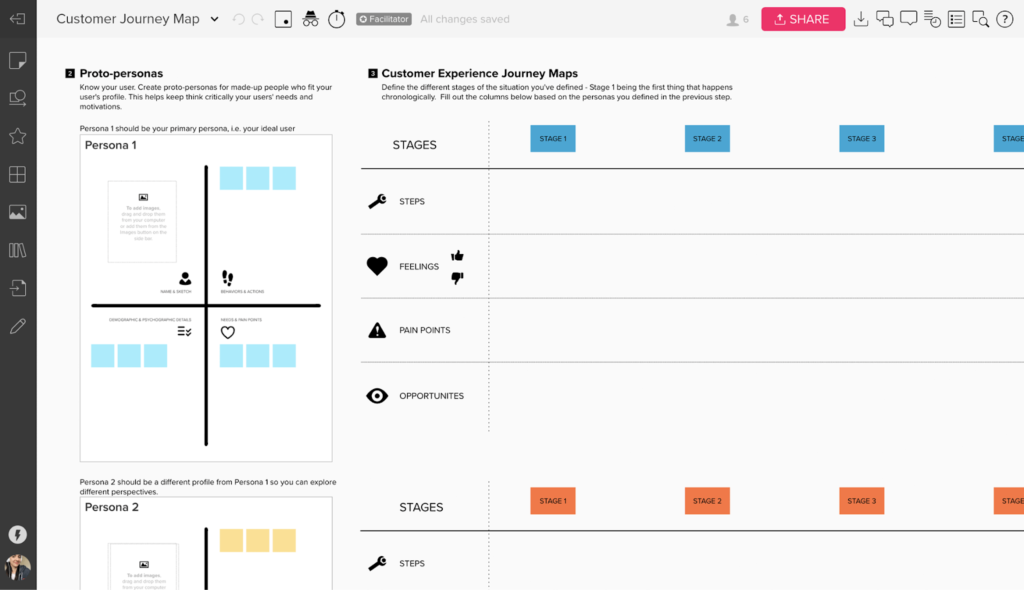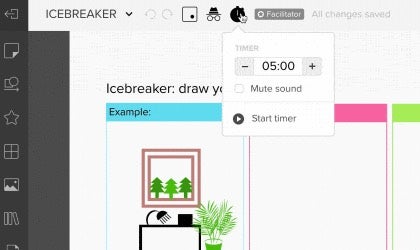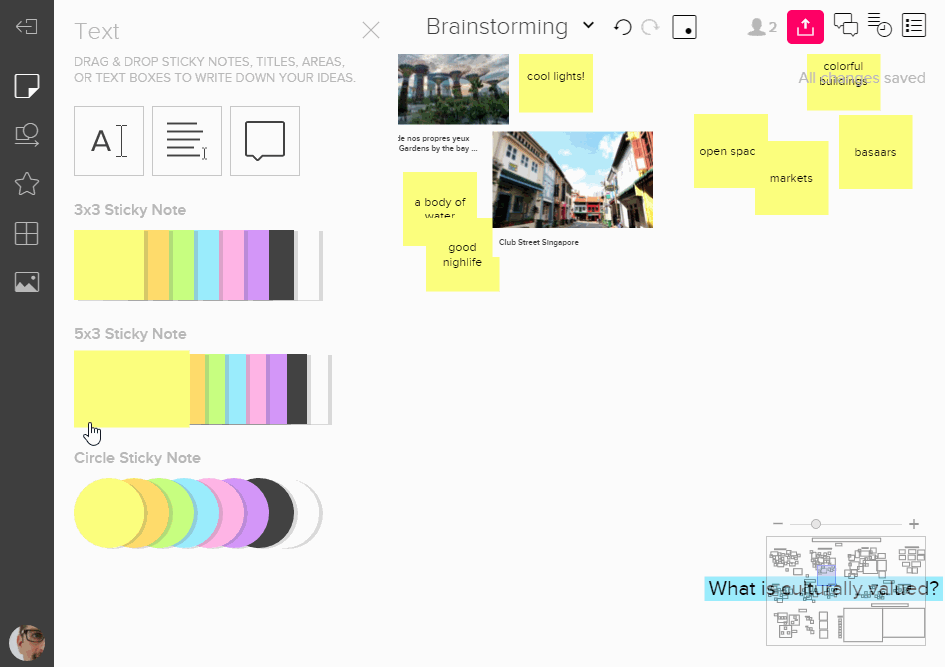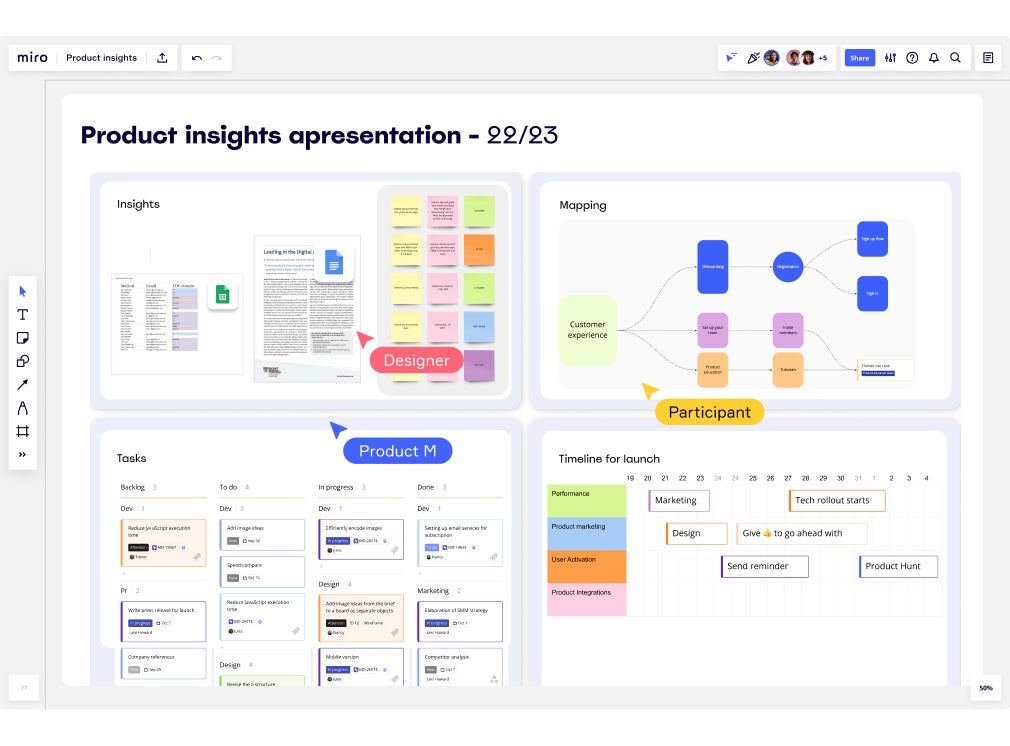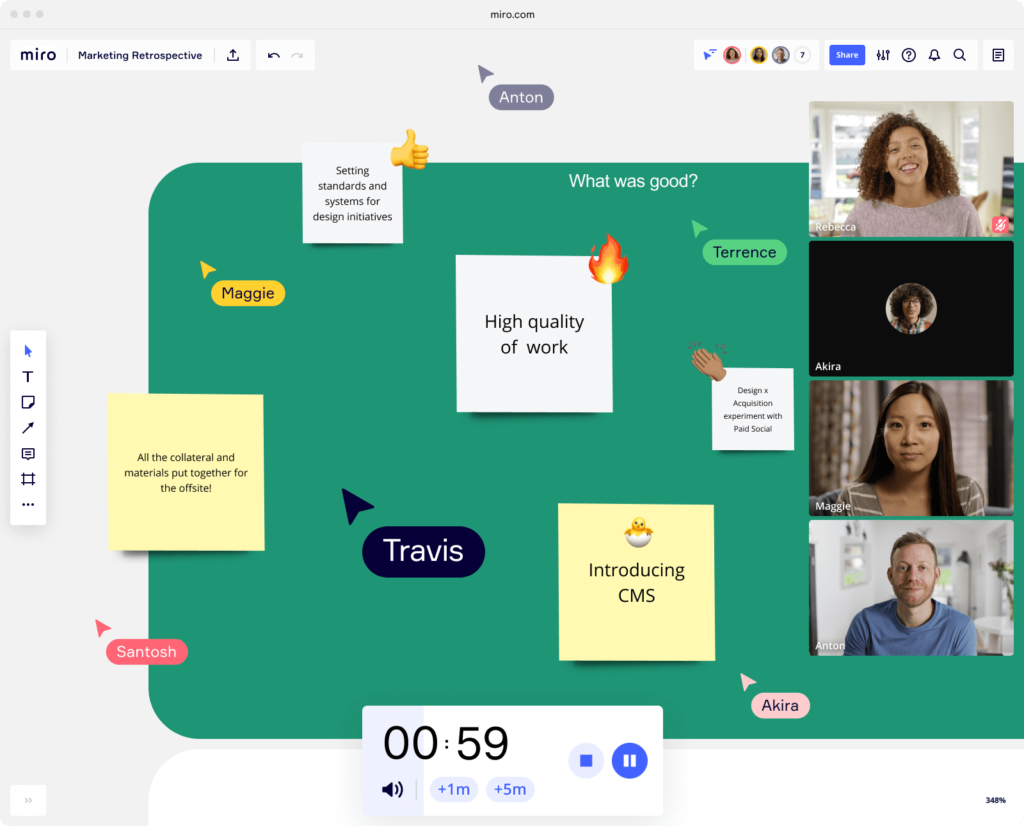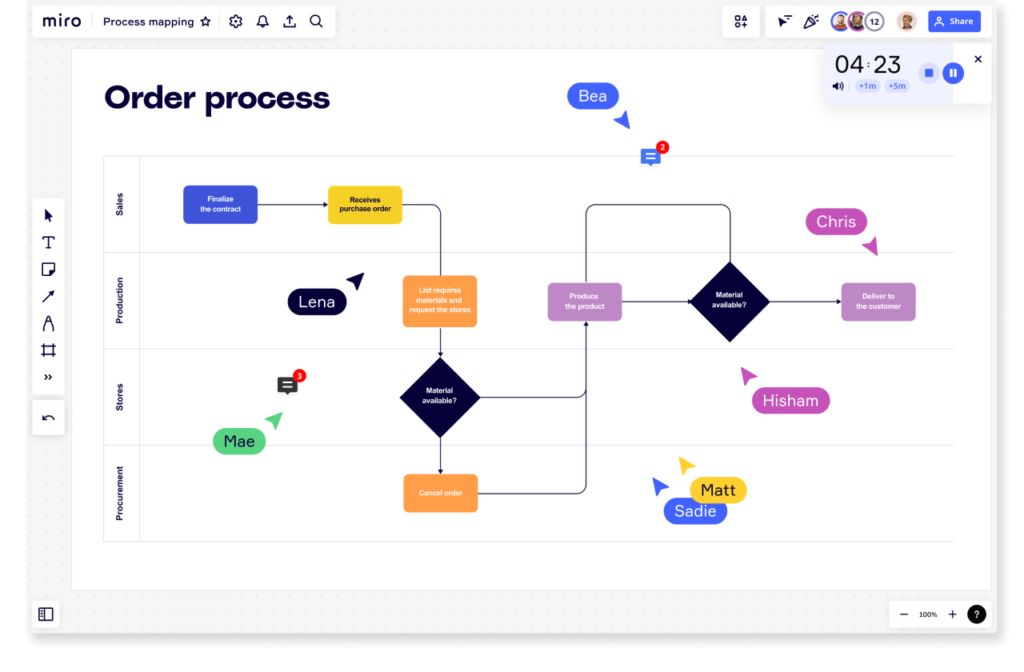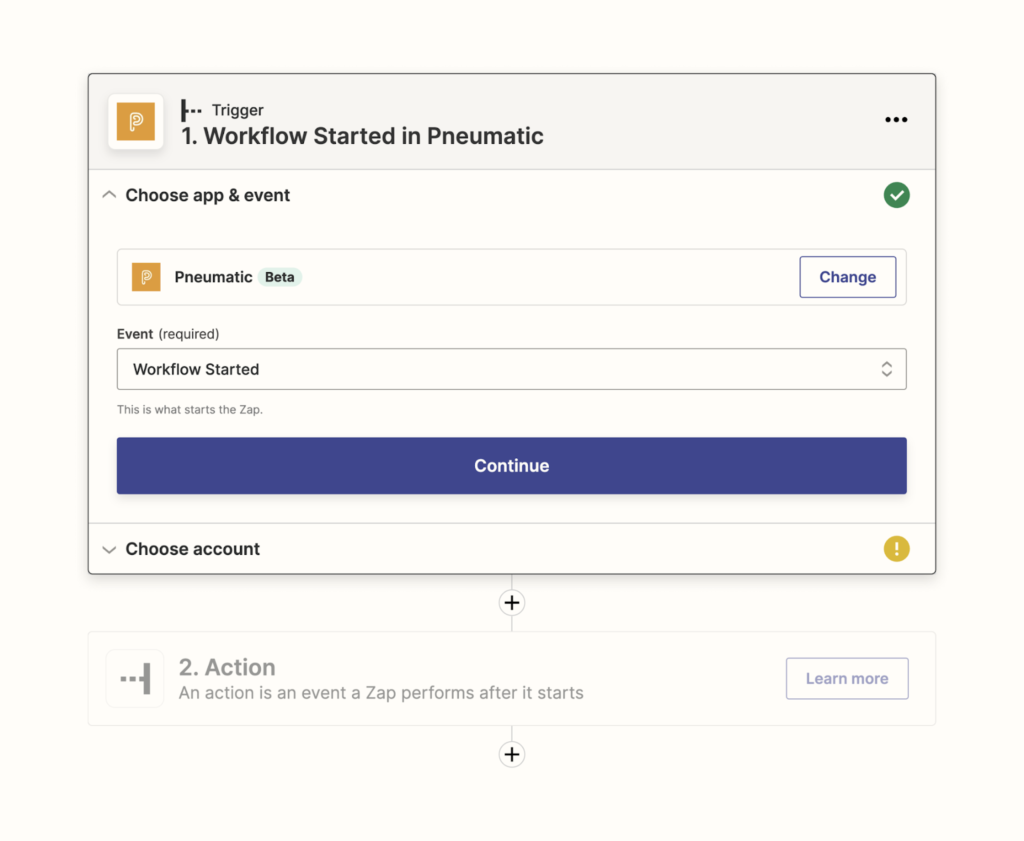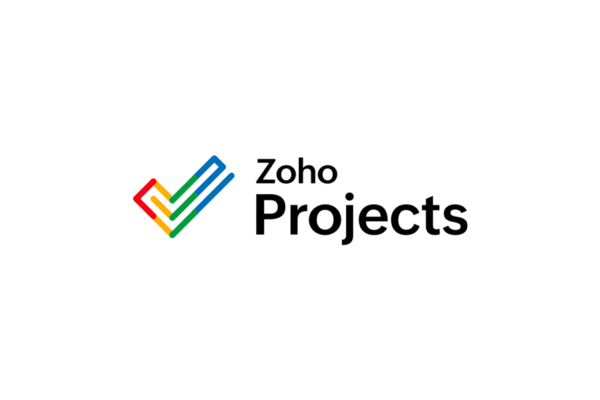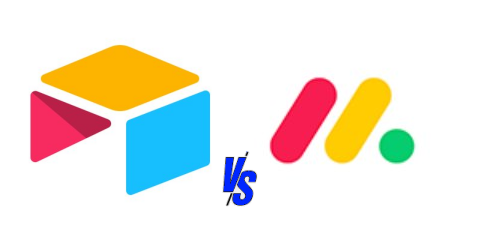Business process management (BPM) is an approach to identifying, designing, modeling, executing, monitoring, measuring, analyzing, optimizing, and automating business processes. The best business process management software and tools assist organizations in their efforts to evaluate, speed up, and enhance business processes, making them more efficient and focused on achieving their objectives.
Navigating the sea of business process management software can be daunting for decision-makers, especially when the stakes are high. Choosing the wrong BPM software doesn’t just lead to wasted investments, it can also drain valuable time and effort, impacting your entire organization. With hundreds of options on the market, the big question is, what are the top-tier BPM solutions available and what makes them the best choices for your unique needs?
Here are the 8 best business process management software that we identified after combing the marketplace, recently updated with the latest pricing and expert insights to guide you in selecting the tool that best fits your team.
- ClickUp – Best All-in-One Platform
- monday.com – Best for Customization
- Zoho Creator – Best for Integrations
- Smartsheet – Best for Flexibility and Customization
- Pipefy -Best for IT and Business Teams
- Mural – Best for Mapping User Journeys and Creating Relationships Charts
- Miro – Best for Collaboration and Visualization
- Pneumatic – Best for Enterprise-Grade Workflow Management
Our independent recommendations are always grounded in our team’s firsthand research and practical experience. We’ve highlighted the unique strengths of each option and what sets them apart from the rest. Let’s dive into the features, benefits, and standout qualities that make certain BPM tools the ultimate allies in optimizing your business processes.

ClickUp: Best All-in-One Platform
ClickUp is known as an “all-in-one” platform capable of handling project management tasks. With ClickUp, businesses can consolidate various workflows and processes into a single environment. This versatility equips teams with the ability to manage multiple tasks or projects at the same time without the need to constantly switch between different tools.
In addition, ClickUp has a wide range of customizable views, such as lists, boards, boxes, and calendars, catering to different team preferences and needs. This adaptability lets users visualize their workflows in the most effective way possible, improving project tracking and management. Add in automation features and integration capabilities to expand the reach across tools and you have an ideal choice for businesses looking to optimize their processes and enhance team productivity.
Standout features
- All-in-one platform: Consolidates various workflows and processes in one place.
- Customizable views: Switch between lists, boards, boxes, and calendars for managing in a preferred style.
- Automation for process optimization: A robust automation engine streamlines repetitive tasks, statuses, and updates, significantly reducing manual work.
- Custom fields and task management: Allows for the creation of custom fields on tasks, as well as hierarchies and dependencies to reflect exact process steps.
- Advanced collaborative tools: Includes chat, comments, document sharing, and real-time editing to enhance teamwork, resolve issues quickly, and support decision-making.
- Custom dashboards and reporting: Fully customizable dashboards and reporting insights and visualizations give a high-level view of ongoing work, potential roadblocks, timelines, and team performance.
Read our ClickUp software review.
Pros & cons
Why we picked ClickUp
Well-known among project managers, ClickUp is a power tool with a vast array of features and extensive customization options. Unlike other BPM tools, ClickUp offers a comprehensive, all-in-one platform that caters to the needs of teams handling large, complex projects. I find ClickUp impressive for its customizable workspace where users can tailor workflows and map requirements for improved productivity. ClickUp plays well with over 1,000 other tools, bringing all business operations into a centralized and well-connected environment. A variety of views including lists, boards, boxes, and calendars) increases the visualization and management of tasks which is welcome when tackling complex workflows.
ClickUp’s key differences: Flexible hierarchy and customization options
ClickUp is a top choice for its flexible hierarchy and customization options. A marketing agency can tailor ClickUp processes to manage campaigns, track social media posts, and handle client communications all in one place. The platform’s native time tracking and numerous integrations help teams ensure that no detail is overlooked.
How much does ClickUp cost?

monday.com: Best for Customization
monday.com is a highly adaptable work management platform that empowers users to tailor workflows to enhance alignment, efficiency, and productivity. As a comprehensive BPM cloud software, monday.com enables seamless management and automation of any business process. Key features include code-free automation for status updates, email notifications, dependencies, due date alerts, task assignment, and time tracking.
monday.com offers various work views, allowing users to see the broader context and gain crucial insights. The automation capabilities handle repetitive tasks, freeing up time for more strategic activities. It also facilitates the centralization of processes through integration with other tools and data systems. Its interactive, highly visual, and customizable nature makes it perfect for mapping and tracking processes effectively.
Standout features
- Highly customizable workflows: You can tailor workflows to fit your specific business needs, and customize boards to track any process virtually, from marketing launches to developing detailed software features.
- Visual work views: With 27+ visual work views, you can see your projects from different angles, making it easier to manage and understand complex processes. Choose from kanban, Gantt charts, calendar, and timeline views to stay on top of your work.
- Integrations with other business tools: monday.com integrates with over 200 third-party apps, including popular tools like Google Drive, Dropbox, Jira, Salesforce, and Outlook, allowing you to centralize all your tools and data in one place.
- Automation and AI tools: Automate repetitive tasks and use AI tools to streamline processes, saving time and reducing errors.
- Resource and time management: Keep track of resources and time spent on tasks, helping you manage your team’s workload effectively.
- Security, permissions, and governance: Set custom permissions at the project or task level to better manage who sees what and keep sensitive information private. Role-based access to controls keeps your system secure and meeting requirements.
Read our monday.com software review.
Pros & cons
Why we picked monday
In using monday.com, I found it excels in flexibility, visual clarity, and customization. Its adaptability allows users to tailor workflows to meet their team’s unique needs and tackle common industry-specific processes. monday.com’s intuitive interface simplifies BPM through a centralized workspace where the visual representation of tasks and progress helps teams quickly determine status of projects and other endeavors and collaborate seamlessly. My overall positive experience with its user-friendly features makes monday.com an easy choice as one of the best business process management software solutions.
monday’s key differences: Customization and visual clarity
monday.com gives users the freedom to customize their workflows to meet specific team needs and adjust for various industry-specific requirements. Its user-friendly interface makes for a centralized workspace where teams come for a quick reference of project statuses. Its ability to customize processes gets teams up to speed and ready to adapt to evolving needs.
How much does monday.com cost?

Zoho Creator: Best for Integrations
Zoho Creator is an innovative low-code application development platform that empowers users to effortlessly design, develop, and deploy essential business software. As a versatile business process management tool, it facilitates the creation of process-based applications, automation of routine tasks, and efficient data management. While it may not be a direct BPM software replacement, Zoho Creator’s low-code approach allows for the rapid development of cost-effective custom solutions in-house.
This software supports a variety of use cases and provides access to all apps from a single account. It boasts an extensive library of ready-to-use and customizable business app templates that are compatible across all devices. The platform excels at integrating with other tools and centralizing processes and data in one place. Its capabilities include tools for automating processes through visual builders, real-time analytics and dashboards, and a no-code AI builder, making it a powerful solution for businesses looking to enhance their process management.
Standout features
- Low-code app development: Design, build, and deploy tailored applications without needing deep coding knowledge.
- Business process automation (BPA): Create custom workflows for repetitive work, blueprint complex processes, and integration with Zoho Flow to reach across other apps and systems.
- Integration capabilities: Connect seamlessly with over 200 third-party apps to centralize data and tools in one platform.
- AI and machine learning capabilities: Zia, Zoho’s AI assistant, can be integrated into Zoho Creator apps to predict outcomes, assess risk, automate processes, and analyze data.
- Integration with Zoho Ecosystem: Zoho Creator works seamlessly with other tools in the Zoho suite, including Zoho projects, Zoho CRM, Zoho Books, and Zoho Desk, and allows adding functionality easily through extensions.
Read our Zoho Creator software review.
Pros & cons
Why we picked Zoho Creator
Zoho Creator made our list with its powerful integration capabilities and overall versatility. This tool connects with a wide array of other tools and systems, centralizing data and processes, which is crucial for maintaining an efficient and cohesive workflow. Its low-code platform makes it easy for users to develop custom applications that meet their business’s unique needs while automating certain actions so time can be spent where it is needed. Businesses looking to streamline their operations will love Zoho Creator’s customizable templates, as they make starting and managing work easier and faster. The software’s ability to integrate smoothly with existing tools sets it apart from other options in the market, making it a robust and flexible solution for any organization’s BPM needs.
Zoho Creator’s key differences: Minimal coding platform and visual workflow automation
Zoho Creator’s low-code development platform gets users to design and build custom business applications without the need for deep coding skills or time-consuming onboarding lessons. Simply put, teams across different industries can create solutions to their specific needs. Zoho Creator’s visual workflow automation feature is a game-changer. Using intuitive drag-and-drop controls, users can easily automate and manage complex processes, enhancing transparency and collaboration across the team. This visual approach simplifies the management of tasks and workflows.
How much does Zoho Creator cost?

Smartsheet: Best for Flexibility and Customization
Smartsheet is a versatile work collaboration software that offers a dynamic workspace and an extensive feature set. It lets teams manage projects, automate workflows, and create new solutions using no-code tools. Easily one of the best business process management software solutions available, Smartsheet helps users map and analyze processes, implement changes, and monitor performance.
With Smartsheet’s automation tools, users can design workflows for repetitive tasks using an intuitive visual editor and multiple pre-built actions. Connectors allow for automatic data syncing across various business platforms or importing and merging data from spreadsheet apps. Additionally, it features dashboards for tracking trends and displaying real-time data, forms for consistent data collection, customizable reports, and a no-code platform for developing web and mobile apps.
Standout features
- Grid, Gantt, and kanban views: The spreadsheet foundation of Smartsheet lets you quickly build and organize data in the way that your team works best. Whether you work in waterfall, agile, or a hybrid methodology, easily toggle between views for at-a-glance information.
- Templates for BPM: The platform’s library of pre-built templates is customizable, so whether you are planning, managing, or tracking, Smartsheet can be adapted to fit your needs.
- Automation: Create complex workflows with an intuitive visual editor and pre-built actions and reduce manual effort and errors.
- Data integration: Connectors sync data across various business platforms automatically, making all information up-to-date and consistent.
- Dashboards and reporting: Interactive real-time dashboards and reports offer insights into trends and display live data, helping teams make informed decisions quickly.
- Program and portfolio management: Smartsheet’s control center lets project managers oversee and manage an entire portfolio of projects and use program-level dashboards to give a high-level overview of all work health, risks, and progress.
Read our Smartsheet software review.
Pros & cons
Why we picked Smartsheet
Smartsheet stands out from the pack because it has already established itself as a trusted project management tool. Its unparalleled flexibility and customization capabilities make it an equally impressive tool for business process management. Smartsheet is designed to grow with the needs of any business, offering a dynamic workspace that can handle both small tasks and bigger, more complex work. One of its standout features—and a personal favorite—is the option to view and manage information in multiple ways. Users can switch between grids, charts, dashboards, cards, and calendar views, allowing for a comprehensive overview of their processes from different perspectives. The ability to custom-tailor Smartsheet to projects and portfolio of work processes boosts collaboration, transparency, and productivity, making it easier for teams to stay aligned and focused no matter how complex the topic is.
Smartsheet’s key differences: Dynamic workspaces and no-code automation
The dashboards and dynamic workspaces available in Smartsheet create a flexible environment where teams can see all work and statuses and manage tasks, projects, and workflows — all in one place. It is easy to visualize processes and collaborate well across teams, which isn’t always prioritized in other BPM tools.
Smartsheet’s no-code automation abilities encourage users to create complex workflows using a simple visual editor. This feature significantly reduces manual effort and human errors, taking business process management to a new level.
How much does Smartsheet cost?

Pipefy: Best for IT and Business Teams
Pipefy is a versatile business process and workflow management tool. Its secure, low-code design allows users to create and automate workflows with efficiency. This tool supports collaboration between business and IT departments, bringing together essential units like revenue, HR, finance, procurement, IT, and governance into one space where everyone can interact.
With Pipefy, users can confidently track, manage, and optimize all of their business processes. The platform supports creating service portals, standardizing forms, and receiving external files at any stage while enabling stakeholders to review request statuses for improved communication and collaboration. Integration with existing tools helps centralize processes, avoid information gaps, and enhance visibility and control. Pipefy also features low-code automation, smart rules, and customizable dashboards for tailored process management.
Standout features
- Advanced workflow automation and control: Facilitates the creation of automated workflows and the set up of advanced logic to guide tasks through differing pathways and routing rules.
- Collaboration and communication: Centralized and seamless collaboration between Business and IT departments across various functions, including integration with Slack and email.
- Service portals, forms, and data collection: Supports the creation of service portals to streamline submission requests or data, and to create custom forms with conditional fields to share or embed.
- Process standardization and scalability: Project managers can create standard operating procedures (SOPs) to standardize processes across the organization and to scale these blueprints to different projects, departments, and for any size team.
- Integration capabilities: Pipefy integrates with existing tools to centralize processes and enhance visibility.
- Customizable dashboards, workflows, and pipelines: A drag-and-drop interface puts project managers in the driver’s seat with the ability to build and customize information presentation, data tracking, approvals, and service requests beginning with pre-built templates to make their own.
Pros & cons
Why we picked Pipefy
Business process management requires attention to detail and Pipefy is exceptional in performance and intelligent automation. It has an extensive feature set ideal for IT and business teams, two areas that naturally speak different languages. Pipefy is capable of bridging this communication barrier and providing a smooth and efficient process management experience for all. Its smart rules automate repetitive tasks, saving time and reducing errors, which is crucial for maintaining productivity and consistency. Additionally, Pipefy’s broad array of features — such as customizable service portals, standardized forms, and real-time collaboration tools — makes it an ideal choice when solid communication and streamlined processes are needed across an organization.
Pipefy’s key difference: Flexible and intuitive platform
Pipefy differentiates itself in the business process management software space as a flexible and intuitive platform. For example, a marketing team can use Pipefy to plan campaigns, manage budgets, and coordinate with suppliers for printing materials. Each step of the process is mapped out clearly, ensuring that no detail is overlooked. Those in the IT department can streamline their service desk operations by automating ticket assignments and tracking resolutions, cutting down response times. Pipefy can adapt to various business needs, making it a powerful tool for optimizing processes and improving productivity across different departments.
How much does Pipefy cost?

Mural: Best for Mapping User Journeys and Creating Relationship Charts
Mural touts robust capabilities for mapping and creating charts, which are key elements of business process mapping. This visual collaboration tool improves teams’ brainstorming, planning, and execution of work through interactive whiteboards and excellent diagramming features. Users can create detailed process maps, mind maps, and flowcharts that represent workflows, making complex business processes easier to understand and manage. The drag-and-drop functionality, option to add comments, and real-time feedback system keep teams aligned on important details.
Mural’s chart creation features are highly intuitive and versatile, allowing users to generate different chart types such as Gantt charts, bar charts, and linear timelines for comprehensive project tracking and work visualization.
Standout features
- Visual collaboration and process mapping: Mural comes with an interactive whiteboard where teams can create detailed process maps and come together in real time to brainstorm, review, or modify certain details.
- Drag-and-drop interface: User-friendly and intuitive for quick adjustments and updates, with features like digital sticky notes, tagging, and grouping based on themes and categories.
- Real-time feedback: Allows team members to comment and provide feedback instantly and offers timer tools and anonymous voting system that comes handy during discussions.
- Customizable templates: Pre-built templates that can be leveraged for specific process and workflow designs.
- Mobile and remote friendly: Accessible from mobile devices for collaboration on the go, making it one of the best business process management software tools for distributed and hybrid teams.
- Agile and lean process support: Mural supports both agile for scrum and kanban workflows, plus lean principles such as creating value stream maps.
Read more: 5 Best Mind Mapping Software to Organize Project Ideas
Pros & cons
Why we picked Mural
Mural is a favorite of ours for business process management because it has impressive visualization and collaboration features. Its interactive whiteboards and diagramming tools are great for creating detailed process maps, mind maps, and flowcharts, providing clear visualization of complex ideas and processes. Mural is especially useful if you’re planning for future work and want to convey these concepts to a wide audience who is required to provide input. Add to the mix real-time feedback, customizable templates, and seamless integration with other tools and you have an excellent contender for managers seeking a comprehensive and versatile BPM solution.
Mural’s key differences: Visual collaboration and intuitive interface
With Mural, you can work visually in a space that is easy to set up, navigate, and share your progress. Mural is unique in its visual process support, which is built into an interface that doesn’t leave users scratching their heads. A business manager at a manufacturing company can use Mural to create detailed work initiative plans and flowcharts to better visualize concepts. The drag-and-drop functionality further supports prioritizing ideas and updating the process maps so everyone is on the same page. Mural’s real-time feedback and voting features make everyone on the team feel heard and motivate them to participate in communication and decision-making exercises.
How much does Mural cost?

Miro: Best for Collaboration and Visual Process Mapping
Miro is a strong choice for business process management software because it is exceptional in team collaboration and visualization. Teams can brainstorm, plan, and execute work on Miro’s intuitive platform using interactive whiteboards and diagramming tools to convert concepts into concrete plans. Team members can share ideas and feedback instantaneously in a live collaboration session, regardless of their physical location, making for a dynamic working environment where everyone is aligned and engaged.
Miro excels at mapping interactive business processes through a suite of tools team members can use to create detailed process maps, mind maps, and flowcharts. This visual approach not only enhances understanding but also helps the team make better, more informed decisions, as stakeholders can see all the changes happening and interact throughout the process.
Standout features
- Interactive whiteboards: Enables real-time collaboration and brainstorming participated by a variety of participants in different locations.
- Process mapping and diagram tools: Facilitates the creation of detailed process maps, mind maps, and flowcharts using various visual aids like sticky notes, images, and diagrams for enhanced understanding.
- Real-time collaboration: Allows team members to give feedback, make edits, and contribute simultaneously, keeping them engaged throughout the process.
- Meeting and presentation mode: Integrates with conferencing platforms like Zoom and Microsoft Teams, and allows creation and sharing of presentations directly within the platform.
- Commenting and voting: Comes with comments and voting features for enhanced decision-making process.
- Security: Ensures data protection and secure collaboration with enterprise-grade security features.
Read our Miro software review.
Pros & cons
Why we picked Miro
Another dynamic visual tool, Miro caught our attention with its comprehensive process mapping capabilities. Miro allows users to create charts, maps, and flowcharts, making it ideal for planning and managing complex business processes. The flexibility it offers supports diverse use cases, from brainstorming sessions and project mapping to work prioritization and detailed process visualization. Miro’s interactive whiteboards and real-time collaboration features enable teams to work together seamlessly, even in a remote work environment.
Miro’s key differences: Flexible and interactive visualization tools
This software is a great option to consider for business process mapping and management. Tech companies use Miro for agile project and process management, utilizing scrum boards to track sprints, backlogs, and stand-ups. Educators have adopted Miro for remote learning, using its interactive whiteboards to create engaging and collaborative lessons on the fly. These real-world examples highlight Miro’s adaptability and effectiveness in various business scenarios, making it a powerful tool for optimizing processes and enhancing team collaboration.
How much does Miro cost?

Pneumatic: Best for Enterprise-Grade Workflow Management
Pneumatic is an enterprise-grade workflow management system with a long list of capabilities. The platform emphasizes ease of use, iterative development, and continuous improvement of business processes. By creating workflow templates, running them, and analyzing performance, teams can identify bottlenecks and make necessary adjustments in a timely manner. Pneumatic’s intuitive interface and powerful tools give organizations the power to streamline operations, and alert everyone involved as to what to do at all times so important milestones and tasks won’t fall through the cracks.
Pneumatic’s more advanced features encompass role-based permissions, remote access, performance metrics, and customizable URLs. Its ability to integrate with third-party applications via a public API or Zapier enhances its functionality so teams can optimize their processes and achieve greater agility and success.
Standout features
- Enterprise-grade workflow management: Facilitates the creation, execution, and optimization of complex workflows using a drag-and-drop builder for design without coding.
- Performance metrics: Provides detailed analytics to track and improve efficiency of business processes, starting from their creation.
- Remote access: Supports work and interaction from anywhere with real-time updates and anywhere access.
- Third-party integrations: Connects seamlessly with other tools via public API or Zapier.
- Workflow templates and approvals: Comes with pre-built templates for common processes to help users get started quickly, and allows setting up automated approval processes and route tasks for staged progress.
- Iterative development: Encourages continuous improvement through easy modifications and updates to workflows.
Pros & Cons
Why we picked Pneumatic
We find Pneumatic to be a powerful BPM tool for managers looking to create and standardize processes in a collaborative environment with enterprise-level support. The platform’s enterprise-grade workflow management is backed by role-based permissions to enhance security and ensure that the right people have access to the right information. But even though it is designed for enterprise use, Pneumatic has an intuitive interface that makes it easy for teams to work together no matter their size or location.
Pneumatic’s key difference: Versatile and powerful workflow automation
Pneumatic is proven to be a flexible and powerful workflow automation option. A financial institution like a bank can use Pneumatic to create a streamlined, automated loan application process. They can instantly map out each step, from initial application and credit check to underwriting and funding, ensuring a smooth and efficient process. In contrast, tech companies can use Pneumatic to manage IT service desks, automating ticket assignments and tracking resolutions, which enhances response times and overall efficiency. Pneumatic’s ability to adapt to various business needs makes it a valuable tool for optimizing processes and improving productivity across different departments in any industry.
How much does Pneumatic cost?
Methodology
What is Business Process Management Software?
Business process management (BPM) software is designed to help organizations streamline their operations and improve efficiency. It allows users to map, monitor, and analyze processes from start to finish, identifying bottlenecks and inefficiencies. By automating tasks, BPM software ensures smoother and more effective business operations. Additionally, it provides suggestions for process optimization and integrates seamlessly with other business systems, offering a centralized hub for workflow management. This comprehensive approach helps organizations improve productivity, reduce waste, and achieve their desired outcomes more efficiently, making BPM software an essential tool for modern businesses.
What is BPM Software Used For?
BPM software is essential for optimizing and streamlining an organization’s operations. It maps, monitors, and analyzes processes with the objective of identifying flaws. By automating routine tasks, BPM software minimizes errors, saves time, and boosts productivity. It also integrates business systems, ensuring smooth data flow and enhancing collaboration across departments. Overall, BPM tools are key to achieving operational excellence.
What Makes a Good BPM Tool?
Business process management is not limited to one software type but is an approach that aims to streamline processes to achieve maximum efficiency and value. Depending on your budget, there are more than a few good options to consider. A versatile, user-friendly BPM tool with strong automation features reduces manual errors and saves time. Customization is vital to tailor workflows to specific needs, and integration capabilities ensure smooth data flow between departments, boosting overall efficiency.
In addition, good BPM software provides real-time analytics and performance metrics to pinpoint and address inefficiencies. Collaborative features are essential for effective teamwork and communication. An intuitive, responsive interface ensures ease of use, enhancing productivity without complicating workflows.
Key Features of BPM Software
Every piece of business process management software comes with a unique set of attributes, but there are features that make a certain tool stand out in terms of efficiency that you should look out for.
Workflow automation
Workflow automation streamlines repetitive tasks, reducing manual errors and boosting efficiency. Users can easily set up automated workflows and tasks using intuitive builders and templates with integrated permissions and approvals.
Process mapping and documentation
Process mapping visually represents workflows, making it easier to identify bottlenecks and areas needing improvement. Users can create or import process maps, flowcharts, and procedure documents, turning them into easily accessible visual tools.
Integration capabilities
A good BPM tool integrates seamlessly with other systems and applications, such as CRM or ERP software. This ensures smooth data flow between departments, enhancing collaboration and visibility, which can significantly boost overall productivity.
Real-time analytics and performance metrics
These tools provide valuable insights into business process efficiency, helping managers spot areas that need optimization. This data-driven approach is crucial for continuous improvement and informed decision-making.
Secure collaboration
Secure collaboration features allow teams to safely access process maps and documents, facilitating contextual collaboration for process improvement. This ensures that all team members can work together effectively while maintaining data security.
Role-based permissions
Role-based permissions enhance security and control by assigning specific access rights based on user roles. This ensures that sensitive information is accessible only to authorized personnel, maintaining data integrity and protecting against unauthorized access.
Customizable dashboards
Customizable dashboards provide a personalized view of metrics and performance indicators, making it easier to track progress and set KPIs. This feature helps keep the entire team aligned on goals and focused on what matters most.
How to Choose the Right BPM Software for Your Business
Choosing the right BPM software for your organization can be challenging. To get organized, first, ask yourself these key questions:
- Understand your business’s needs: What processes do I want to manage and improve?
- Prioritize flexibility and automation: Where can I streamline repetitive tasks and reduce manual errors?
- Evaluate usability: How many technical versus non-technical users will be using this tool?
- Check integration capabilities: What existing tools and applications do I use today that I will still need if the feature is not included?
- Consider scalability: How will my business grow to handle new work?
- Look for real-time analytics: What type of real-time analytics and performance metrics can help me make data-driven decisions?
- Ensure security: What are my organizational requirements for protecting data and maintaining compliance?
- Read user reviews and case studies: What can I learn from the experiences of other businesses that I can apply to my own?
- Request demos and trials: What do I want to test in the software to determine if it meets my business’s needs and is easy to use?
Next, complete an exercise to assess the complexity of your workflows and the level of customization you require. For example, a marketing agency might prioritize tools like ClickUp for its dynamic views and robust automation, which can streamline campaign management and improve team collaboration. On the other hand, a financial institution might benefit from Pneumatic’s enterprise-grade workflow management and real-time analytics, which ensure secure and efficient process handling.
Finally, consider the integration capabilities of the software, especially if your business relies on multiple tools and systems. Tools like Pipefy stand out for their ability to centralize processes and integrate with various platforms, making them ideal for businesses that need a cohesive and connected workflow management system. Additionally, user-friendly interfaces and collaboration features are essential for ensuring team adoption and productivity. Miro’s visual tools and real-time feedback options make it a great choice for industries that thrive on creativity and collaboration, such as design and education.
FAQs
Bottom Line
Business process management (BPM) software is vital for organizations looking to optimize operations, enhance efficiency, and unify various workflows. With features ranging from workflow automation and process mapping to advanced functions like real-time analytics and role-based permissions, BPM tools provide a thorough solution for managing business processes.
Whether you’re in marketing, finance, or IT, selecting the right BPM software — such as ClickUp for its all-in-one capabilities, Pipefy for its robust automation, or Pneumatic for its enterprise-level support — relies on your specific needs and industry requirements. Much like when you’re choosing a tool for project management, when choosing the right BPM software, consider how it can improve productivity, minimize errors, and deliver better business outcomes.
